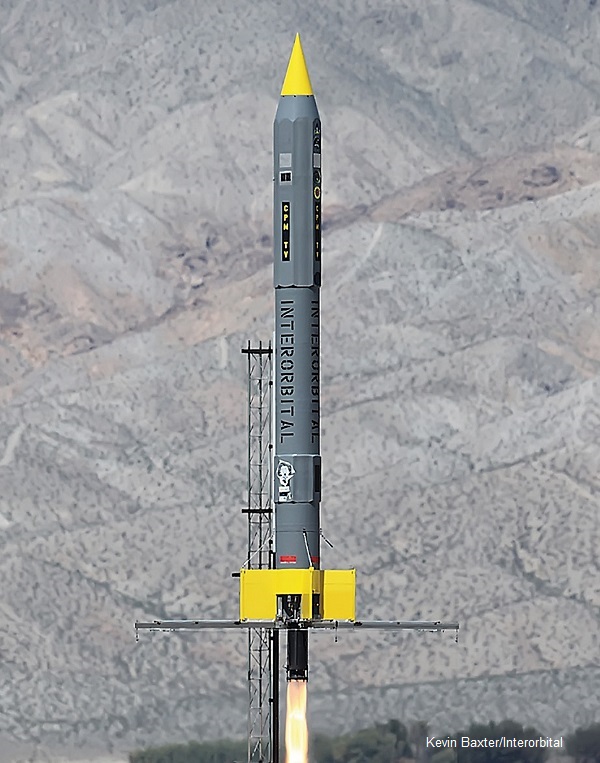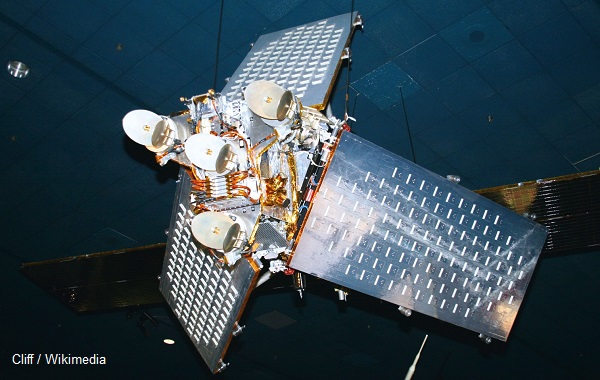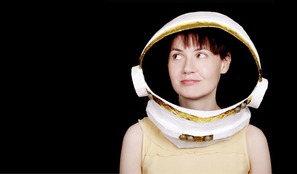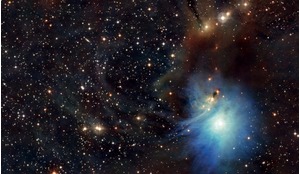Atraditional space system is a closed-loop system composed of one, a few, or (less often) dozens of spacecraft, and a ground segment created specially or rented for a space mission. Each craft in such a system is self-sufficient and performs its own special function. The result is a service with its own product processing and distribution model.
In commercial project implementation, this ideology of space-based systems demonstrated an insufficient competitive edge when compared to alternative solutions. Consecutive bankruptcies of systems like Iridium (1999, satellite communications), Globalstar (2002, satellite communications), RapidEye (2011, ERS) showed that the investors’ initial hopes were highly exaggerated.
Development of space exploration based on inertia, in the framework of partially-closed national space programs and the tradition of slow approbation cycles and new technology implementation, allowed space exploration to remain somewhat on the side-lines of global technological progress taking place in the manufacturing, electronics and information technology industries.
This in turn stimulated the development of a corresponding model of orbital constellation design. The cosmos was automatically put into the losing position compared to the competition with Earth-oriented mobile and innovative technologies. As a result, only a few traditional sectors of satellite industry (such as satellite television) can currently depend on stable commercial viability and survive without an “anchor,” i.e. a government client.
Ambitions reborn
But today, ambitious space constellation projects are enjoying a rebirth right before our very eyes. A low-orbit race for the creation of a maximally time-efficient ERS (Earth Remote Sensing) service has already begun (SkyBox, Planet Labs projects).
Investors and entrepreneurs alike are once again taking on development projects focussed on global satellite internet based on the next generation of technology.
Standardised technology is key
A high level of standardisation and unification in complex technical systems (which include small satellites) helps move to serial production. Serial production lowers the overall cost of production and on-board software, shortens small spacecraft (SSC) assembly time and provides opportunities for line assembly.
Due to electronic component production and data traffic growth, fast data bus systems are becoming a necessity. The development of data buses, standardised and specialised for space use (such as SpaceWire) is a promising direction.
Meanwhile, the development and universalization of operation systems based on open-source solutions for on-board use will allow new applications to be installed and used on-board, and for new experiments to be conducted using the existing infrastructure.
The creation of Strand-1 and PhoneSat has demonstrated the potential use of high-level OS (such as Android) for operating SSCs. LINUX OS and similar systems have long been used in space technology, for example, to operate SpaceX’ Dragon spacecraft.
The most important example of SSC standardisation at the hardware level is the CubeSat form-factor, introduced in 2001, which encouraged the development of miniature satellite components with standard parameters and even the emergence of online stores selling such components.
The TableSat platform
Space Plug&Play architecture is an example of communication protocol standardisation. This open standards set was developed by the American Institute of Aeronautics and Astronautics (AIAA), together with the U.S. Air Force Research Laboratory (AFRL).
In 2012, the Russian Sputnix company began working on the set’s development and implementation. Sputnix developed a standard set for mechanical, electronic and data interfaces and implemented them in its own microsatellite platform TableSat.
This allowed the company to create and launch its first satellite ERS, TabletSat-Aurora, in just nine months and with minimal financing. The satellite was launched in June 2014 and became an example of the successful use of the Plug&Play approach in creating ERS SCs. Prior to this it has typically been difficult to use this approach in integrating the ERS optical-electronic equipment with the satellite platform.
Flexibility in development
Payloads (for example, ERS equipment) present a wide range of requirements for the satellite platform, often forcing the developers to create unique equipment, unlike any of the used standards. In order to adapt various types of payloads, flexible module construction of new standardised SC has become necessary.
The only remaining issue is choosing the typical module size – from a device placed in a standard case, to a block containing a self-sufficient system set that is an independent SC, meant to be combined with other such blocks.
In our opinion, one of the results of developing modules and standardisation of satellite systems together with the distribution of a single network in low orbit will be wide-spread implementation of technologies of automatic assembly in orbit (from standard modules, each of which is a self-sufficient SC). This method will be effective due to the synergetic effect of modular assembly.
An example of SpaceWire-standard electronics
Great progress can be made by combining SDRtechnologies and aphased ntenna arrays
A project to create such an SC is already in the works. It is being developed by NovaWurks, by order of DARPA. It uses so-called “satlets” (20x20x10 cm) as modules. It is expected that satellites consisting of twenty to thirty such satlets will be assembled in orbit.
How to cooperate on Earth?
In order to provide effective satellite constellation operations and receive enormous volumes of ERS data, the creation of a global network of ground-based stations that would be available for world cooperation of satellite operators, has been necessary for quite a while.
To exchange low-speed data flow with the SC, a wide network of the cheapest possible radio stations, working in amateur frequencies and based on open hardware and open software is best suited. Software-defined radio technologies (SDR) can be used for high-frequency sections and 3D-printing – for antenna rotators. SatNOGs is an example of such a project. Further technological development may make this approach viable in higher frequency ranges – S-band, X-band, etc.
In order to provide data reception from commercial ERS, it’s necessary to establish a global network of multi-band stations and allow a number of operators to use it on a commercial basis. Great progress can be made here by combining SDR-technologies and phased antenna arrays.Development of inter-satellite communication systems will provide SC operations and useful data transfer to the operator in any part of the planet. Development of TCP/IP-like protocols and communication tools in space will allow for the organisation of the most economically effective signal routing systems.
Further development of satellite-to-satellite communication technology will lead to the creation of a single data-communication system and a flexible distribution of communication, computation and potentially energy resources, inside the overall network of spacecraft.
Many promising low-orbit spacecraft are performing experiments on-board, with on-board modems of Globalstar, Inmarsat, Iridium constellations.
TCP/IP-like protocols are being developed by NASA for low-orbit space systems. Satellite-to-satellite communication projects in optical range are also being developed, providing unprecedented data transfer speed and interference insusceptibility.
Commercially-based re-transmission of SSC signals by medium or high-orbit satellites has to become more wide-spread. However, if this technology is to become widely used, measures must be taken for the effective use of the spectrum. It’s probable that a section of the spectrum would be divided amongst users on the basis of TDMA or CDMA technology, much like mobile communication networks.
Phonesat balloon test
Mutual re-transmission by satellites in low orbit is also necessary. So, virtually every SC must have the ability to re-transmit data flow from other satellites, using a common protocol, and becoming a global network junction point.
It’s important to note, that theoretically V- and W-band, as well as higher frequencies, up to optical, can be used for satellite-to-satellite communication. These frequencies cannot be used for Earth-to-board and back communication due to severe atmospheric absorption.
Future infrastructure
Mutual retransmission by satellites in low orbit is also necessary
The development of such technology at the accumulation point (15 years) will lead to the possibility of creating apportioned, renewable, fault-resistant infrastructure in near-Earth orbit. It will be composed of spacecraft clusters, tied into a unified network that connects them to each other and the ground segment. This infrastructure will essentially provide its users with a “hosting” service, giving them the opportunity to use its base to provide services of various operations, with the basis of payloads with universal integration interface.
A significant impediment in the development of new private space exploration is the lack of low-budget and systematic launch methods, although during the last decade many developments have been made in this field. Specialised transporting and launching containers using specific form-factors are currently being developed. In the future, this will lead to each launch rocket having reserved space for concurrent SC launch, on the basis of consistent specifications.
Because of this, the spacecraft to rocket adaptation time would be minimised, which would make regular launch into orbit possible. Examples of attempts at such unification are CubeSat containers, the Space Sherpa platform, etc.
 A Neptune rocket at launch
A Neptune rocket at launch
Aside from this, light class rockets are being actively developed – occasionally referred to as “nano-launchers.” These include module rocket systems such as Neptune, made by Interorbital Systems.
Frequency limitations
Lack of frequency resources is not only a technical, but an organisational problem, so solutions to this problem lie in different fields.
It’s possible to move to higher frequency ranges. Equipment for higher frequencies is more complex and more expensive, and the element base is smaller. Accordingly, commonly utilised frequencies are much busier.
The lowest range where it’s currently possible to obtain a frequency assignment for sufficiently broadband transmission (a few dozen Mhz and more) is X-band. Eventually it, too, will become overloaded. Advancements in electronics allow us to use higher and higher frequencies with acceptable expenditure, however the higher frequencies are fundamentally limited by the Earth atmosphere’s absorption properties.
Spatial and polarisation division of same-frequency radio-waves is a principle that is still widely used. The effective use of the spectrum by large SC during television transmission from geostationary orbit is telling – the same frequency may be used by satellites in different positions and additionally radiate with different polarisation.
Frequencies can be used even more effectively by using multi-beam antennas. For example, a Ka-Sat satellite builds up to 82 rays and one frequency can be reused up to 20 times. With further technological advances it can be expected that similar technologies could be adjusted for use on small spacecraft.
Signal retransmission by spacecraft described in one of the earlier paragraphs also helps save the frequency resource. Despite the fact that such transmission creates two communication channels instead of one, a more effective use of each frequency and the possibility of using very high, even optical, frequencies for satellite-to-satellite channels should lead to resource conservation.
Lasers & ‘space garbage trucks’
Currently, the main sources of space debris are the last stage of launch rockets, upper-stage rockets, “dead” spacecraft and their fragments. However, the dynamic development of small spacecraft industry may soon lead to low orbit space debris that mostly consists of SSC that are no longer operational.
A high level of standardisation and unification in complex technical systems helps move to serial production
According to current international law, once an SC finished active work in low orbit, it must be removed from orbit in no more than 25 years.
While large satellites are removed from orbit by their engine unit, things are harder with “micro” and “nano” SC, since classic liquid-propellant engines or solid motor cannot be used. At this time, research and experiments are going in two main directions: development of miniature jet-propulsion engines with a safe rocket propellant, and creation of various expanding constructions that increase the SC’s aerodynamic resistance.
The American SSC NanoSail-D2, launched on October 20, 2010, weighed about 4 kg, and was equipped with an expandable 10m sq sunsail. The use of such equipment leads to the increase in the ballistic coefficient, which provides for a quick slowdown.
An example of a newly developed miniature engine is the nanosatellite STRaND-1, launched into orbit on February 25, 2013. It is composed of eight ablative-type PPTs (Pulsed Plasma Thruster), which sublimate the propellant from a solid into a liquid state with the help of an electric arc. The SSC is also fitted with an ohmic heating electric jet engine WARP DRIVE (Water Alcohol Resistojet Propulsion Deorbit Re-entry Velocity Experiment), that works on a water-alcohol mixture.
 A replica of an Iridium satellite
A replica of an Iridium satellite
Swiss engineers at EPFL (Lausanne) have developed a prototype ultracompact ionic engine -MicroThrust, which allows small satellites to be moved beyond near-Earth orbit. The engine weighs only about 200g, including propellant and control electronics. Instead of chemical propellant, the new engine uses ionic liquid EMI-BF4. The powerful electric field educes ions from the liquid and ejects them with a high speed of up to 10 km/s, creating an exhaust thrust of 100 microns with the specific impulse of 3000 seconds. Despite the fact that the engine needs high voltage, a few solar panels with low wattage are enough to power it.
SSC can also be removed from orbit using external impact. One of the methods is to burn up the debris using laser systems located in space, or changing the space debris fragments’ trajectory with the help of a laser, in order to prevent it from colliding with an SC. However, such methods will not be available for quite some time.
Another method that may become available in the future is the creation of special “garbage trucks” - satellites, fitted with equipment to collect and dispose of space debris. The aforementioned EPFL has such a project in the works (“Clean Space One”), as does Tethers Unlimited. However, right now these projects are in the lab experiment stage due to many technical difficulties, such as the mechanics of capturing space debris, algorithms of safe approaches to debris objects, etc.
The concept of garbage-truck satellites is promising in the context of multi-satellite distributed systems. Within such a system, assigning one of the constellation spacecraft to capture non-functioning satellites and move them on a trajectory away from the orbit is justified.
What the next few decades hold
From the point of view of the end user, the development of technology within this paradigm will lead to a completely new service quality, communication technology and ERS, specifically due to the development of combined/integrated systems – all in another 15-20 years. Orbital constellations provide global communication; an ability to work with space system resources from any part of the Earth; systems will be flexible and easily modified; renewed depending on the user’s needs and wants.
Access to data received with the help of the space segment will continue to become less and less discreet. Considering the parallel development of automatic data processing, space can provide humanity with a volume of useful information previously unseen in human history.
The authors would like to thank Stanislav Karpenko and Alexander Purikov at Sputnix Ltd.














